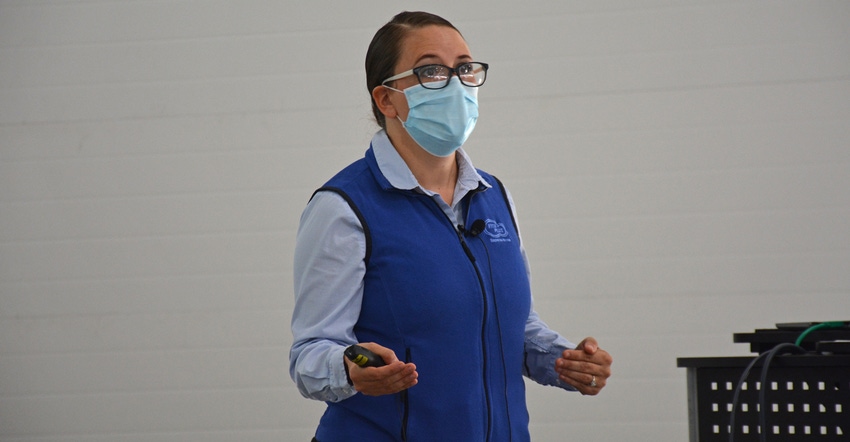
Another season, another miracle. It’s amazing how much time and effort growers put into growing and packing feed, all to make sure their cows are fed the best.
But how much time should that feed be fermenting in the bunk or silo?
Michelle Chang-Der Bedrosian, a forage technical specialist with Vita Plus, said dairy producers should plan on at least three months’ worth of carryover corn silage to ensure the new feed has a minimum amount to ferment, and that cows are getting the feed they need to maintain milk production. The longer it’s stored, the better.
"This is why when you have corn silage that is fermented for a while, you can rub it on your hand and you'll get like a chalky feel on your hand. You're feeling these tiny particles," she said. "The length of storage, forage storage … is more important than processing. We must be having these conservations about how can we harness the strength of the bacteria in the rumen, and the strength of the bacteria in the silo, to get the best-quality forages and the most milk that we can.”
Speaking at the recent World Dairy Expo, Chang-Der Bedrosian told a group of show visitors that the old way of thinking that silage is stagnant once it’s packed isn’t true anymore.
“Silage may look stagnant, but under the surface a whole lot is going on," she said.
Starch is a good example. Over time, starch digestibility increases as feed is stored longer while fiber digestibility stays about the same.
There is a type of prolamin protein in corn that’s wrapped around the starch particles of the kernels as a sort of mesh, but the quantity and extent differs by hybrid. Chang-Der Bedrosian said that microorganisms produce enzymes that will dissolve prolamin protein over time, making starch digestibility go up. BMR corn silage has more of these prolamin proteins and, as a result, less starch available, but that’s offset by an increase in fiber digestibility.
Starch is a rich source of energy for milk production. But too much too fast can decrease rumen pH and expose it to rumen bacteria, leading to sick cows.
Timing is crucial
Still, properly managed starch is one of the best sources of energy for dairy cows, especially lactating cows. Switching the feed source from one year’s silage bunk to the next will eventually happen, but doing so suddenly can be bad for the animals.
“What happens when you do so abruptly, at least to milk production, is that it tanks,” Chang-Der Bedrosian said. “What we're doing is taking corn silage that's highly digestible because it's been stored the whole year, switching cows onto a less-digestible corn silage.”
This is where long-term planning and timing comes in.
Processing corn silage can help to break open the corn kernels for better digestion and expose the bacteria to rumen bacteria. The same thing happens during fermentation, but instead of the kernel being broken into larger chunks, they’re broken down into even smaller particles, resulting in the potential for even better digestion.
This only happens when there is enough time to ferment, but of course no year is perfect.
So what’s the minimum amount of time you should keep corn silage in storage before feeding? A minimum of three months, Chang-Der Bedrosian says. If it’s alfalfa silage, only three weeks of storage are needed.
“Timing of storage is more important than processing score,” she says.
About the Author(s)
You May Also Like






